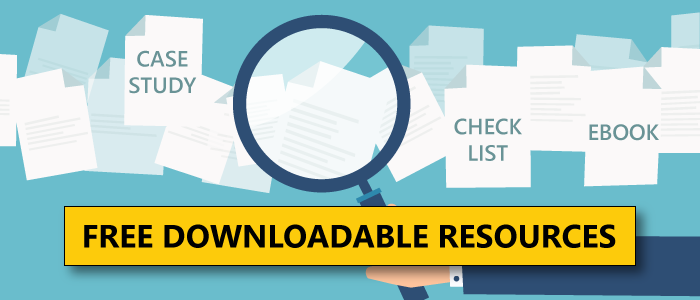
How to Upgrade from SAP WM to EWM: A 12-Step Guide for Enterprises
Looking to enhance your warehouse management operations and drive efficiency in your supply chain? Deciding to read this guide is the unofficial first step, and the twelve steps contained in this blog will help you transition smoothly from SAP WM to EWM. Our supply chain experts (with 15+ years of supply chain experience) have condensed the process to help you unlock the fullest potential of your warehouse management system. Without further ado, let’s dive in!
12 Steps to Upgrade Your SAP WM to SAP EWM
1. Assess System Requirements
Before embarking on the upgrade journey, it's crucial to assess your current system requirements and align them with the capabilities of SAP EWM.
- Evaluate your warehouse management needs, including inventory volume, complexity, and specific business processes.
- Identify any gaps or areas for improvement and define the goals you want to achieve with the upgrade.
2. Plan the Upgrade Project
A well-structured project plan is essential for a successful upgrade.
- Define project objectives, set realistic timelines, and allocate necessary resources.
- Create a detailed roadmap outlining the key milestones, tasks, and dependencies.
- Collaborate with stakeholders and establish clear communication channels to ensure everyone is aligned and committed to the upgrade project.
3. Safeguard Your Data
Data is a critical asset in any warehouse management system. Before proceeding with the upgrade, ensure your data is protected and backed up.
- Create a comprehensive data backup strategy to safeguard your existing WM data.
- Perform data cleansing and archiving activities to eliminate unnecessary or outdated information.
We recommend consulting with data management experts to ensure data integrity throughout the process

4. Install EWM Software
Installation is a straightforward but critical step in the upgrade process! Install the SAP EWM software on your system landscape.
- Ensure you have the necessary hardware infrastructure and software prerequisites in place.
- Follow the installation guide provided by SAP and consult with technical experts to ensure a smooth installation process.
- Perform system checks to verify successful installation and readiness for further configuration.
5. Configure Your System Landscape
To ensure a successful upgrade, you'll need to properly configure your system landscape to support SAP EWM.
- Define the necessary system parameters, organizational structures, and master data settings.
- Set up warehouses, storage types, and storage sections based on your specific requirements. Configure resource-related settings, such as work centers and activity areas, to optimize labor management.
- Align the system settings with your desired warehouse processes and operational workflows.
6. Fine-Tune System Configuration
Every business is different. Fine-tune the system configuration to customize SAP EWM according to your unique business needs.
- Tailor the system to support your warehouse processes, such as inbound and outbound operations, inventory management, and handling unit management.
- Configure advanced functionalities, including wave management, cross-docking, and slotting, to optimize your warehouse operations.
- Leverage SAP's best practices and consult with SAP experts to ensure an optimal configuration.
7. Seamlessly Migrate Data
To migrate your data from the existing WM system to SAP EWM in a seamless manner, you should develop a strategy that includes data extraction, transformation, and loading.
- Cleanse and validate the data to ensure accuracy and consistency.
- Utilize SAP's data migration tools and techniques to facilitate a smooth transition.
- Perform data reconciliation and conduct thorough testing to validate the migrated data in the EWM environment.
8. Thoroughly Test Functionality
Testing is a crucial phase to ensure the functionality and stability of your upgraded system.
- Conduct comprehensive testing of the configured processes, customizations, and integrations.
- Perform unit testing, integration testing, and user acceptance testing to validate system behavior and identify any issues or discrepancies.
- Develop test scenarios that mimic real-life warehouse operations to ensure the system performs as expected.
9. Optimize Performance
Optimize the performance of your SAP EWM system to ensure efficient and responsive warehouse operations.
- Fine-tune system parameters, such as batch jobs, background processing, and system monitoring.
- Identify and address any performance bottlenecks, such as system response times or data processing delays.
- Monitor system performance regularly and make necessary adjustments to maintain optimal performance levels.

10. Empower Your Teams
Prepare your teams for the transition to SAP EWM through comprehensive training and change management initiatives.
- Provide training sessions to end-users, including warehouse managers, operators, and IT support staff.
- Familiarize them with the new system functionalities, user interfaces, and operational workflows.
- Implement change management strategies to address any resistance to change and ensure smooth adoption of EWM across the organization.
11. Plan for a Successful Go-Live
Develop a detailed go-live plan to ensure a successful transition to SAP EWM.
- Coordinate system cutover activities, data validation, and end-user support during the go-live phase.
- Define contingency plans and backup measures to mitigate potential risks. Conduct thorough end-to-end testing before the go-live date to ensure system stability and readiness.
- Communicate the go-live plan to all stakeholders and monitor the transition closely.
12. Continuous Support and Improvement
After the go-live, establish a robust support and maintenance framework to address any post-implementation issues or user queries. Do this by:
- Providing ongoing support to end-users and conducting regular system health checks.
- Gathering user feedback, monitoring system performance, and identifying opportunities for continuous improvement.
- Staying updated with SAP's latest releases, patches, and enhancements to leverage new features and optimize your EWM system over time.
To wrap up, upgrading from SAP WM to EWM requires careful planning, execution, and ongoing support. Following this guide will help ensure a successful transition. To maximize ROI from your SAP system and significantly enhance your upgrade process to EWM, consider leveraging the capabilities of ShipERP, a trusted longtime partner of SAP.
Consider ShipEWM: The Parcel Shipping Enhancement for Your SAP EWM
Want to add multi-carrier rate shopping, label printing, and proof of delivery to your warehouse processes?
ShipEWM processes shipment orders at higher transparency and better compliance. The software integrates natively 100% with SAP to drive strong connectivity.
With ShipEWM, you can rapidly pick, pack, and ship with multiple integrated carriers directly out of SAP EWM in one platform. Its architectural design allows for a seamless integration, so you’ll access your required warehouse processes as soon as possible.
What will you gain from ShipEWM in the long run?
- Improved shipment processing time
- Reduced shipment and freight costs
- Eliminated SAP middleware for supply chain efficiency
- Strongly driven warehouse process connectivity




